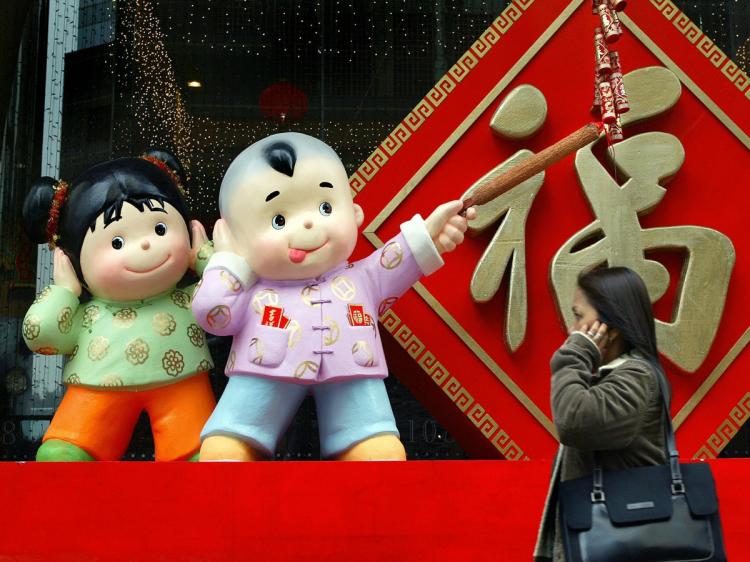There used to be temple fairs, but that was before my time. Children would look forward to the New Year as early as the 12th month in the lunar calendar.
As soon as New Year’s Eve dinner was finished, children could not wait to run out into the courtyard or the alley to let off firecrackers by throwing them into the air one by one. Some children were more daring; they would hold on to the end of the firecrackers and let them off in their hands with extended arms—“bang,” crisp and sharp!
In those days, there were only a few varieties of firecrackers, mainly small ones. Most families would buy their children only one string of small firecrackers or only half a string. Nobody would let off an entire string of firecrackers all in one go.
The firecrackers could not be let off all the time. They had to be saved up.
Children would also go around holding paper lanterns with candles burning inside them. The lanterns were of different sizes and in red, green, yellow, or other colors. Their shapes could be round, oval, or styled like small animals. A bunch of kids holding lanterns would play hide-and-seek or war games in the yard. What happiness!
Yet, there were also mishaps. One year, with his big head and his small body, the third oldest child of one household fell flat on his face when he was not paying attention. Not only did his lantern burn, but his new clothes were scraped and torn, too. How he cried! One could guess that his luck that year would not be good either.
According to the tradition, on New Year’s Eve one would stay up past midnight to see the old year out and the new year in. Families began to make dumplings from the middle of the night on. Not being able to lend a hand, the children would eat peanuts and crack sunflower seeds. The elderly would make a pot of jasmine tea. Everybody would chitchat with one another.
The next morning, the floor of the house would be covered with shells of peanuts and sunflower seeds. Parents, however, would only allow the shells to be swept up into piles in corners of the room. They were not allowed to be taken out. It was said that to take rubbish out on the Chinese New Year would lead to financial loss.
Everybody would get up bright and early on New Year’s Day. When children saw their elders in the street they had to give them New Year’s greetings.
Read More . . .Money and Relatives
In those days, people did not have money to give red packages. Most neighbors would give each other dumplings. After a few rounds of exchanges, no one knew whose dumplings were the most delicious.
A must-do during the New Year was visiting relatives. Children were often not too keen on going to other people’s homes. The biggest attraction was being offered sweets, peanuts, and sunflower seeds.
To wish the elderly a Happy New Year, one had to prepare a pastry box. At that time, there were few types of pastries in Beijing. Other than the extravagant flaky pastries, there were only sponge cakes, walnut cookies, Manchu candied fritters, and glutinous rice bars.
The shop assistants would fit the pastries into a rectangular cardboard box, fit the cover, put a pink sheet of paper on top, and fasten the box with paper strings. This would then become a top-grade gift.
After the fifth day of the New Year, the adults all had to go back to work. As for the Lantern Festival, in my memory that it has never happened.
Later, the country was in turmoil; people fought like dogs. The calamity lasted for ten years. The temple fairs then returned, but only in form, not in their true spirit.
To children nowadays celebrating, the Chinese New Year means nothing more than getting a few red packages. When I told my daughter the other day some interesting stories about celebrating the Chinese New Year in my childhood, she asked me innocently, “Daddy, when will I have the kind of New Year celebration you described?”


